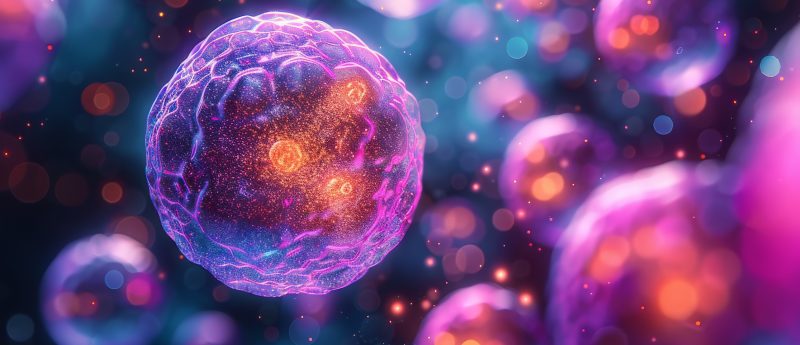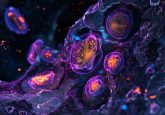Imaging Mass Spectrometry at the 64th ASMS Conference for Mass Spectrometry and Allied Topics

In this latest instalment of our column from the Mass Spectrometry Research Center at Vanderbilt University, Danielle Gutierrez highlights some of the imaging mass spectrometry (IMS) presentations presented at the 64th ASMS Conference for Mass Spectrometry and Allied Topics.
The inaugural meeting for the American Society for Mass Spectrometry (ASMS) took place over 60 years ago, where 26 mass spectrometry papers were presented. The society grew out of the American Society for Testing Materials (ASTM) Committee E-14, which began sponsoring annual scientific meetings in conjunction with the Pittsburgh Conference in 1952. By 1954, members convened in New Orleans, LA, USA, independently of the Pittsburgh Conference [1,2]. A summary of the goals initially laid forth by the ASTM Committee states:
“It is the objective of the committee to encourage participation, on the widest possible basis, of individuals interested in mass spectrometry, in order to coordinate work and promote the exchange of information in the field. Emphasis will be placed on presentation, at national meetings, of papers on all phases of mass spectrometry, with subsequent publication in the most appropriate medium [2].”
These objectives still prevail at annual meetings today. This year ASMS took place in San Antonio, TX, USA. The conference featured 384 papers, 2,978 posters, and over 6,200 attendees, along with short courses, tutorials and workshop sessions. While the first ASMS meeting had four sessions that focused largely on the analysis of hydrocarbons [2], the 2016 meeting (the 64th annual conference) contained 64 sessions ranging from mass spectrometry fundamentals to diagnostics and clinical applications [3].
This range of topics exemplifies the transition of mass spectrometry from its origins in physics and chemistry to its current utility across many fields of science including biology and medicine, where it has shaped our understanding of physiology and disease [4].
Imaging mass spectrometry (IMS) presentations focused on sample preparation, method development, instrumentation, biomarker discovery, and pharmaceutical and biomedical applications. IMS was the topic of 24 papers and 165 posters [3]. For MALDI IMS, the week started with a two-day short course taught by Shannon Cornett (Bruker Daltonics) and Michelle Reyzer (Vanderbilt University). Summary slides of the course are available [5].
On Wednesday, a workshop organized by Vilmos Kertesz (Oak Ridge National Laboratory) and Raf Van de Plas (Delft University of Technology) focused on three aspects of multimodal IMS: experimental design, image acquisition, and data analysis [6]. MALDI IMS papers and posters were presented throughout the week. Selected presentations are highlighted below, and full abstracts are available in the online planner [6].
Spatial resolution
- Monday, Poster 226: Three micron resolution MALDI-MS imaging without transmission geometry or oversampling and its application to maize root cross-section. Adam Feenstra and Young-Jin Lee (Ames Laboratory-US DOE and Iowa State University: Ames, IA, USA)
Modifications to a MALDI-ion trap-orbitrap instrument achieve a laser spot size as small as 3 µm and the acquisition of lipid and metabolite images in maize at this spatial resolution.
- Monday, Poster 230: Maximizing performance of spatial proteomics through the fusion of ultra-high speed MALDI-TOF and high mass resolution MALDI FTICR IMS. Jeffrey Spraggins, Raf Van de Plas, Jessica L Moore, Daniel Ryan, and Richard M Caprioli (Vanderbilt University: Nashville, TN, USA and Delft University of Technology: Delft, Netherlands).
Fusion of MALDI-TOF MS and MALDI FTICR MS protein images integrates the strengths of both methods – high speed image acquisition of MALDI-TOF MS systems with the high mass resolution of MALDI FTICR MS instruments – to obtain high quality protein images that can improve protein identification capabilities.
A related poster is Monday, Poster 249: Characterization of Data-driven Image Fusion for Imaging MS: Exploring Image Modality Combinations that Maximize Predictive Performance for Distinct Biomolecular Classes, Van de Plas et al.
Sample Preparation
- Monday, Poster 236: High performance matrix pre-coated targets for MALDI imaging of lipids. Junhai Yang and Richard M. Caprioli (Vanderbilt University: Nashville, TN, USA).
A novel method for pre-coating slides improves tissue section mounting onto slides and is reproducible, providing a quality, high-throughput sample preparation approach for MALDI imaging of lipids.
Disease Markers
- Tuesday, Poster 318: Comparative mapping of PSA and N-glycan distributions in FFPE prostate cancer tissues using MALDI-FTICR and rapid MALDI-TOF mass spectrometry imaging. Richard R. Drake, Peggi M Angel, Hendrik Jan Kobarg, and Shannon Cornett ( Medical University of South Carolina: Charleston, SC, USA and Bruker Daltonic: Billerica, MA, USA).
Peptide N-glycanase digestion of formalin fixed prostate cancer tissue sections and microarrays demonstrates region specific localization of four glycan groups within the tumor and in the surrounding environment.
- Tuesday, Poster 332: Evaluating the viability of kidney transplants using high-speed MALDI-Imaging. Shane R Ellis, Tim C van Smaalen, Nadine E Mascini, Berta Cillero-Pastor, Tiffany Porta, Benjamin Balluff, Carine J Peutz-Koostra, L.W.E van Heurn, and Ron M A Heeren (M4I, Maastricht University Maastricht: Netherlands, Maastricht; UMC+: Maastricht, Netherlands; FOM Institute AMOLF: Amsterdam, Netherlands; University of Amsterdam: Amsterdam, Netherlands).
IMS lipid and protein profiles distinguish the level of ischemia in porcine kidneys and pre-transplant human kidney biopsies. Results from the porcine kidneys demonstrate 100% accuracy, compared to 29% (2/7) accuracy of histopathology analyses.
3D Imaging
- Wednesday, Paper, WOC: Visualizing tumors in three dimensions: a first look at drug distribution in brain tumors using 3D MSI.David Calligaris, Armen Changelian, Katherine A Kellersberger, Yonatan Morocz, Forest White, Jeffrey N Agar, Jann N Sarkaria, Nathalie Y. R. Agar (Department of Neurosurgery and Department of Radiology, BWH, and Department of Cancer Biology, Dana-Farber Cancer Institute, Harvard Medical School: Boston, MA, USA; Bruker Daltonics: Billerica, MA, USA; Massachusetts Institute of Technology: Boston, MA, USA; Department of Chemistry and Pharmaceutical Sciences: Northeastern University, Boston, MA, USA; Department of Radiation Oncology, Mayo Clinic: Rochester, MN, USA).
Three-dimensional MALDI imaging of mouse brains sections demonstrates Erlotinib permeability through the blood brain barrier and its presence in a glioblastoma multiforme 12 tumor.
Host-pathogen Interaction
- Wednesday, Paper, WOD: Redefining the pathogen-host interaction: Imaging Mass Spectrometry reveals Staphylococcus aureus proteins within host tissues. Jessica Moore, Neal D. Hammer, Kristie M Lindsey Rose, Jeffrey M Spraggins, James Cassat, Eric P Skaar, and Richard M Caprioli (Vanderbilt University: Nashville, TN, USA)
MALDI IMS detection of proteins directly from colonies within infected mouse kidney tissue and subsequent identification through an on-tissue microextraction approach demonstrates, for the first time, the discovery of a protein from infection-inducing bacteria in the host tissue.
Single-cell Imaging
- High-throughput single cell analysis using high spatial resolution and high sensitivity imaging mass spectrometry. Bo Yang, Jeffrey M Spraggins, Richard M Caprioli, Jeremy L Norris (Vanderbilt University: Nashville, TN, USA).
A high-throughput method facilitates the analysis of thousands of single cells by MALDI IMS in one hour while achieving high spatial resolution (5-25 µm) and identifying hundreds of ions from single cells.
MALDI IMS is a growing topic at ASMS, with papers and posters demonstrating progress in spatial resolution, sample preparation, and throughput. These advancements will continue to facilitate biological and clinical applications of MALDI IMS, such as those presented above and at the conference.
Upcoming Feature: IMS Analyte Identification Strategies
References
- Wiley HF. Observations on Some of the Events Leading to the Formation of ASTM Committe E-14. In: American Society for Mass Spectrometry History Posters. American Society for Mass Spectrometry, Available from: <http://www.asms.org/docs/history-posters/wiley’s-speech.pdf?sfvrsn=2>
- Grayson MA. 1st Annual Conference 1953 Pttsburgh, PA, Hotel William Penn. In: American Society for Mass Spectrometry History Posters. American Society for Mass Spectrometry, Available from: <http://www.asms.org/docs/history-posters/1953.pdf?sfvrsn=2>
- 64th Conference on Mass Spectrometry and Allied Topics. Conference Program. American Society for Mass Spectrometry, Available from: <http://www.asms.org/docs/default-source/conference/64thasms-program-full_web.pdf?sfvrsn=2>
- Nobelprize.org. Nobel Media AB 2014. The 2002 Nobel Prize in Chemistry – Popular Information [Internet]. Available from: <http://www.nobelprize.org/nobel_prizes/chemistry/laureates/2002/popular.html>
- Cornett S, Reyzer M. MALDI Imaging Mass Spectrometry: Basic Tools and Techniques, June 4th-5th. Available from: <http://www.asms.org/docs/default-source/conference-short-slides/08-maldi-imaging-slides.pdf?sfvrsn=2>
- 64th Conferences on Mass Spectrometry and Allied Topics. Online Planner. Available from: <https://ep70.eventpilot.us/web/planner.php?id=ASMS16>





